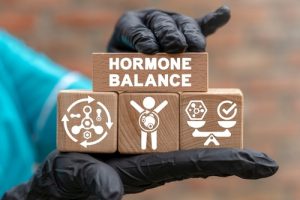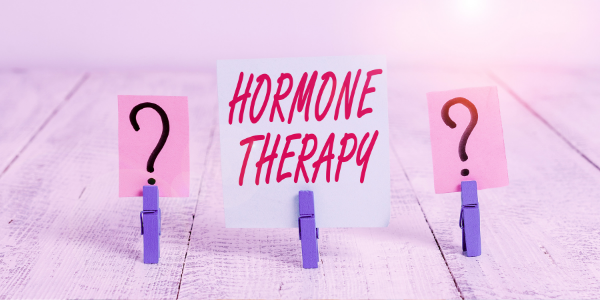If you’re a woman entering menopause and considering hormone replacement therapy (HRT) to help manage the symptoms, it can be challenging to understand which type is right for you.
There are many different types of HRT treatments available on the market today, all with their benefits and risks. We will discuss what HRTs are, how they work and what’s important to know before starting therapy.
What Is Hormone Replacement Therapy?
HRTs are used to help manage the symptoms of menopause in postmenopausal women. HRTs can be taken by mouth, injection or skin. They are different from anabolic steroids, which are taken orally or injected with a hypodermic needle into muscle tissue.
Types of Hormone Replacement Therapy
There are two main types of HRTs: combined estrogen/progestin therapies (EPT) and estrogen-alone therapies (ET). Combined EPT is the type administered most often for menopausal symptoms because it works in your body to lower your levels of “bad” estrogens while increasing levels of “good” estrogens. Some forms of EPT also contain progesterone, which helps balance estrogen’s effect on the uterine lining.
EPT contains one or more types of estrogen and progestin, which work in both women and men to lower estrogen levels. The addition of progesterone in some forms of EPT helps balance the effect estrogen has on the uterus, which helps reduce your risk for endometrial cancer. If you are at risk for osteoporosis, your doctor may recommend that you take a bisphosphonate drug along with your HRT or instead of it. There are different ways this can be done depending on whether hormone therapy is oral (pills) or transdermal (patches, creams). Taking bisphosphonates up to five years before starting HRT has been shown to decrease your risk for osteoporosis.
How Does EPT Work?

ET is an option for women who cannot or do not want to take EPT because of certain health conditions, like breast cancer, uterine bleeding, heart disease or strokes. It contains only estrogen and works by replacing the amount of estrogen that your body would usually make during menopause. ET can be given as a pill and comes in patches (worn on your skin) and vaginal creams (used inside the vagina), among other forms.
Benefits of HRTs
1. Relieves Menopausal Symptoms
HRTs can help relieve some of the symptoms associated with menopause. The most common symptom during menopause is hot flashes, which can be uncomfortable and embarrassing. You may feel a warm flush to your face, neck or chest that often comes with sweating. Some women also experience night sweats, which can disrupt their sleep if they’re not prepared for them. EPT decreases the frequency and severity of both hot flashes and night sweats in addition to increased vaginal lubrication. It can take up to three months before these symptoms improve when taking HRTs because estrogen levels have to build up within your body before you start noticing any relief from these symptoms.
2. Prevents Osteoporosis
Osteoporosis is one of the main concerns for women during menopause. It’s a disease that makes your bones weak and more likely to break. For women, it usually starts around menopause because estrogen helps keep bones strong. This is why it’s essential to replace the lost amount of estrogen after menopause through HRTs. Your doctor can determine if you are at risk for osteoporosis by checking your bone mineral density through a DXA scan or DEXA test. Suppose you have been diagnosed with osteopenia (low bone density) or osteoporosis. In that case, you may need to take a bisphosphonate drug in addition to taking an HRT to reduce your risk for further bone loss.
3. Helps Maintain Normal Vaginal Tissue
ET helps maintain normal vaginal tissue by increasing moisture and elasticity, decreasing your risk for infections like bacterial vaginosis. During menopause, the walls of the vagina become thinner and produce less lubrication. This can make sex uncomfortable or even painful if tissues inside the vagina are dry, thin, irritated, or you experience recurrent bladder infections. ET is one way to relieve these symptoms because it helps keep the estrogen levels within your body balanced. It also restores vaginal pH levels to reduce your odds of getting urinary tract infections (UTIs).
4. Other Health Benefits
Both types of HRTs provide other benefits that may interest you too. EPT prevents hot flashes and night sweats, osteoporosis and vaginal dryness. It also helps with mood swings, sleep issues (insomnia) and maintaining healthy skin and hair. ET provides relief from hot flashes and night sweats while also preventing osteoporosis. In addition, it helps reduce your risk for heart disease, diabetes, colon cancer, breast cancer, vision problems, Alzheimer’s disease, numbness or tingling in your hands/feet (peripheral neuropathy) and other conditions related to estrogen deficiency.
Conclusion
Hormone replacement therapy is a safe and effective way to reduce the symptoms of menopause, but there are some risks involved. The most considerable risk is that you increase your odds of getting breast cancer if you’re taking EPT. If you’re concerned about this, talk with your doctor about other treatment options such as ET or a combination of hormones.





